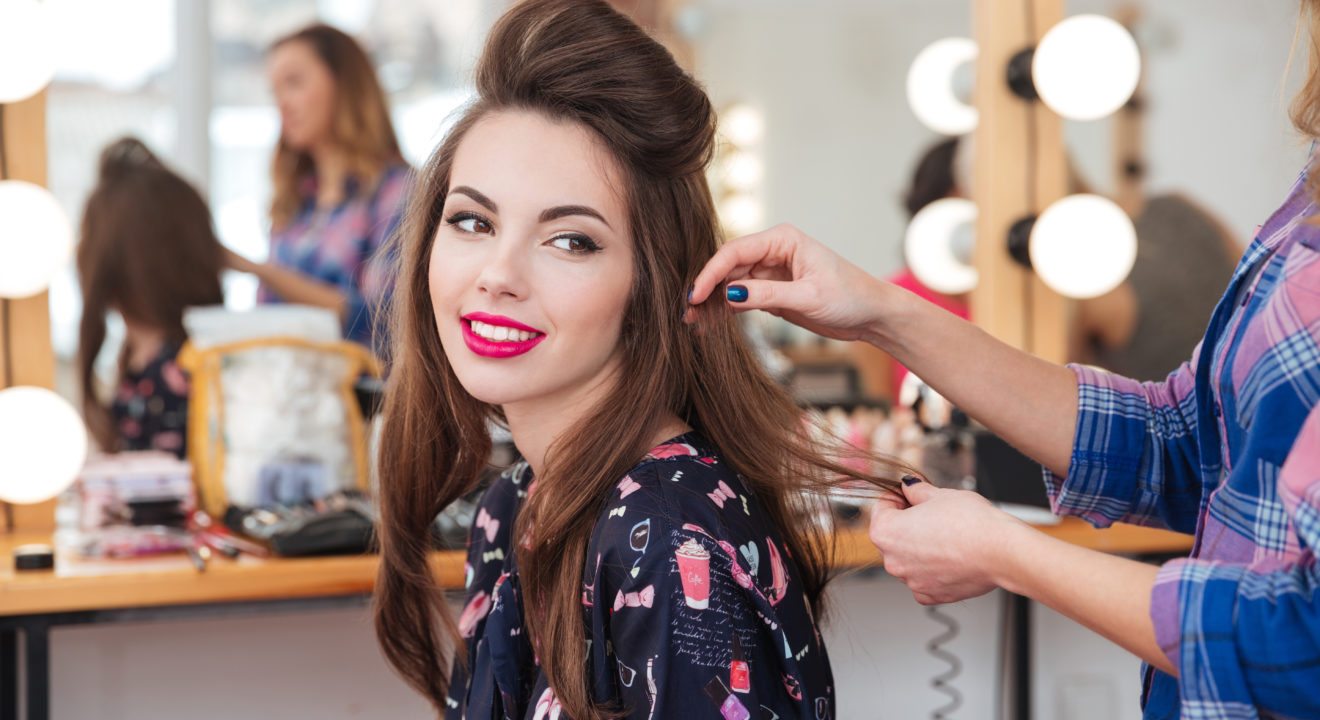Politics August 4, 2016


Unless you have sensitive skin, chances are you don’t bat a lash when it comes to the ingredients label on your favorite makeup products. That’s a bold move if you consider how your skin acts like a sponge to soak up your daily skincare products. Just like your sunscreen takes several minutes to soak in before it becomes effective, over time your face absorbs moisturizer, primer, foundation, and all your other makeup products. The ingredients infiltrate your bloodstream in the same way that nicotine and estrogen patches work to deliver drugs.
So, if your face is constantly absorbing your daily foundation, you would at least hope that all the ingredients are non-toxic and healthy for your skin. Unfortunately, only 10 percent of the 10,000 ingredients commonly used in personal care products have safety data. What’s more, while the UK has banned nearly 1,400 harmful ingredients in personal care products, the US only partially prohibits 11, and even allows small doses of harmful ingredients with known side effects, such as mercury.
Can you imagine if we acted that casually with all the other substances we put in our body? What if just 10 percent of the food in the grocery store was safety tested?
According to Beautycounter, a cosmetics company campaigning for beauty industry reform, even seemingly innocuous ingredients such as “fragrance” can conceal thousands of chemicals that companies are not required to disclose. While it’s difficult to imagine that your brightly colored makeup in its sleek packaging could contain toxic ingredients, the FDA found that lipsticks from several prominent brands such as L’Oreal, Maybelline, and NARS contained trace amounts of lead. According to Beautycounter CEO Gregg Renfrew, other common ingredients found in cosmetics have been linked to cancer and hormone disruption.
So if you think the days of toxic face paint were left behind with the ancient Romans and pale-faced Elizabethans, think again. The United States has not passed a major federal law regulating the safety of cosmetics ingredients since 1938. That’s more than 75 years since the personal care industry received new guidelines from the FDA. To put this in perspective, here are three things newer than the laws regulating your skincare staples: lava lamps, zip codes, and 8-track tapes. It’s time to update our beauty safety standards for better health.
In 2015, California Senator Dianne Feinstein introduced S.1014, the Personal Care Products Safety Act. If it passes, the FDA will gain authority to research, review and restrict cosmetics ingredients, as well as recall products with unsafe health impacts. While the bill represents positive momentum in support of the issue, Beautycounter advises the bill could be made stronger if the FDA’s definition of “unsafe” were expanded to include “a variety of hazard endpoints, including cancer, infertility, hormone disruption, and brain damage.”
The cosmetics and skincare company traveled to Washington D.C. to hold a Congressional briefing in support of beauty industry reform. Beautycounter invited its consultants to meet with Senate representatives and discuss the importance of safe ingredients. These at-home sales consultants have been instrumental in spreading the word about Beautycounter’s mission and the Personal Care Products Safety Act.
One Beautycounter consultant, Mallery McClure, explains, “The more I learn about the lack of regulation, the more I desire [improvements] for my children – that there will be not just one company with safe ingredients or two or three, but that they could pick up a product off the shelf and not have to wonder if it will affect their development or contains a carcinogen, or causes birth complications. I like working with a company that pushes for that.”
GET INVOLVED: HOW TO SUPPORT THE PERSONAL CARE PRODUCTS SAFETY ACT
If you’re passionate about your health and the safety of your family, you can contact your Congressional representative in favor of S.1014. Beautycounter provides an overview of the bill on its website, along with a sample letter you can use to contact your senator.
WHAT YOU CAN DO RIGHT NOW TO PROTECT YOUR HEALTH
Familiarize yourself with unsafe ingredients lists so you’re prepared for your next trip to Target or Sephora. Beautycounter researched over 800 ingredients to evaluate their impact on health and wellbeing. You can browse a summarized and simplified “Never List” of harmful ingredients they have pledged to keep out of products. It’s a handy resource for interpreting cosmetics labels that won’t make your head spin.
In your quest for safer beauty products, be careful not to confuse organic beauty products with safe products. While the food industry provides clear standards for certified organic products, the beauty industry has not agreed on an official definition for “organic” or “natural.” Since there aren’t any regulations on how these words can or cannot be used on personal care packaging, SELF Magazine reports that companies often label their products in misleading ways.
Rather than trust the front of the label, always check the back for red flag ingredients.